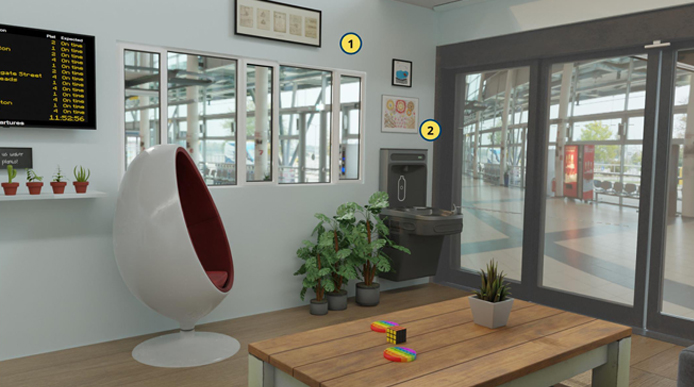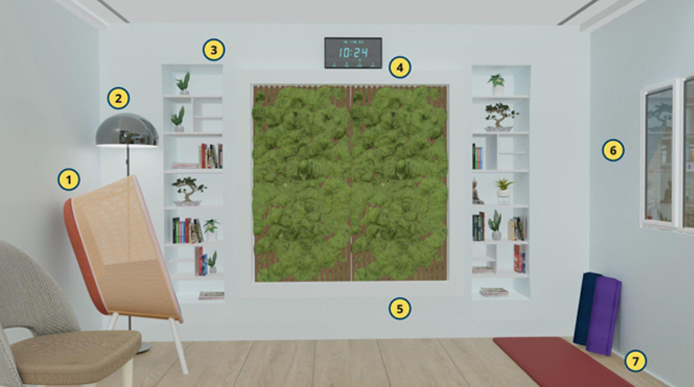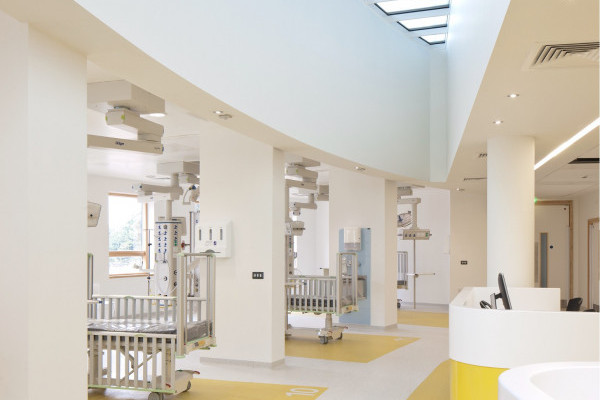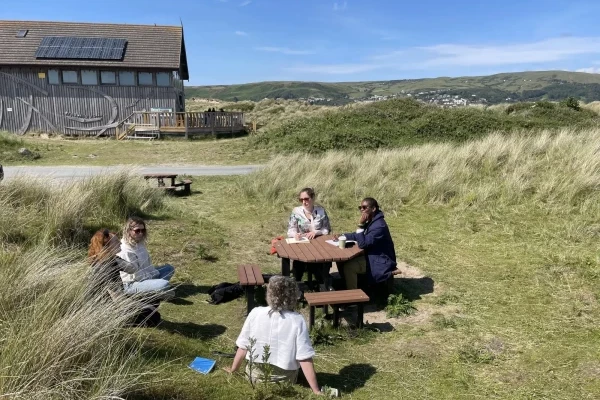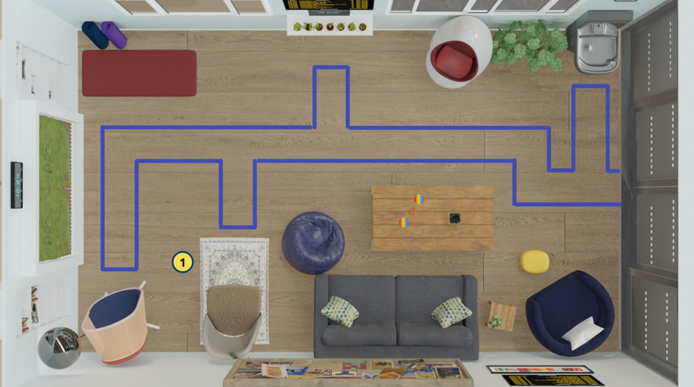
Calm Spaces: Designing Inclusive Rail Environments in Oxfordshire
Oxfordshire Community Rail Partnership
We deeply appreciated Mima’s sensitivity and expertise throughout the Calm Spaces project - their values-led approach, inclusive workshop facilitation, and ability to translate community insights into thoughtful design recommendations made them an exceptional partner.
Oxfordshire Community Rail Partnership (OxCRP) is a grassroots organisation that collaborates with local communities and stakeholders to develop rail-based solutions that address short-term needs, whilst enabling longer-term change. Their work focuses on improving access and inclusion within sustainable transport with a strong emphasis on economic, social and wellbeing outcomes to benefit communities and visitors served by Oxfordshire’s railway stations.
Their vision is for ‘a society where transport is inclusive, sustainable and better connects people’, and their mission is ‘to make it easier for people to use sustainable transport’.
Building on previous project work with OxCRP in 2023 where Mima conducted a feasibility study into the installation of Calm Spaces across five train stations within, or with closely connected to, the Cotswolds Area of Outstanding Natural Beauty, OxCRP reappointed Mima to take the next steps in developing the Calm Spaces concept. Our role involved:
- Facilitating two workshops with lived experience user groups to ensure the Calm Space design would be suitable for the widest range of users.
- Developing a comprehensive, industry-leading Calm Space design brief to inform future station designs supporting customers with neurodiverse needs.
- Consulting with the key rail stakeholders to tailor the design to the specific challenges and requirements of a train station environment.
- Consolidating findings and recommendations into a community led technical requirements document for the Calm Space installation once an appropriate space is identified, providing a foundation for future station development across the network.
The Challenge
Research highlights the persistent accessibility barriers faced by disabled people and those with diverse requirements when using public transport. According to Scope, 54% of disabled people often or always feel anxious using public transport, and 30% say difficulties with public transport reduce their mobility. Disabled people take 38% fewer trips than their nondisabled counterparts, a statistic that has not improved in the last 15 years (Motability, 2022). More recently, 63% of young disabled people experience mental and physical exhaustion from using public transport (Motability, 2025).
These figures underscore the importance of inclusive environments that reduce anxiety and support wellbeing throughout the travel experience. However, several key challenges stand in the way of achieving this within rail environments:
Lack of consistent standards and definitions: Existing Calm or Quiet Spaces vary greatly in design quality, purpose, and accessibility, leading to confusion and inequitable experiences for users.
Lived experience engagement: While many organisations engage access panels where possible, few existing models have been fully co-designed with disabled people or those with sensory and mental health considerations - highlighting an opportunity to ensure future spaces better reflect real-world needs.
Operational and spatial constraints: Train stations present complex environments with high footfall, noise, and heritage or structural limitations that can hinder the creation of restorative spaces.
Need for scalable and adaptable design solutions: There is a requirement for flexible design principles that can be tailored to different station sizes, contexts, and community needs while maintaining a consistent level of accessibility and inclusion.
The Solution
Mima’s technical requirements document was driven by community-led workshops, ensuring that the voices and experiences of users shaped the outcome. Throughout the workshops, the aim was to humanise the transport experience and the train station environment, making it as inclusive as possible.
Drawing on feedback from lived experience groups, Mima developed recommendations to ensure Calm Spaces are inclusive, flexible and suited to a variety of station environments. We recommended that where possible, all stations provide a centrally located, dedicated Fixed Calm Space as an enclosed room, providing a consistent, restorative environment for passengers seeking a quiet and controlled space.
In addition - Modular Calm Pods, smaller, adaptable units should be installed throughout the station, with the location of each Modular Pod dependent on the size of the station and space available.
Participants with lived experience emphasised the value in offering both types of spaces. Modular Pods can be used as a first port of call for an arriving passenger wishing to self-regulate in private before entering a fixed calm space where other members of the public may be present. Equally, at the other end of a journey, a passenger may want to use a Modular Calm Pod near departure platforms, supporting those who need time to self regulate before continuing their travel.
Recognising that each station differs in layout and spatial capacity, the combination of a dedicated Calm Space and/or Modular Pods provides a scalable and adaptable solution ensuring that all stations, regardless of size or infrastructure constraints, can offer meaningful, accessible spaces for passengers to rest and regulate.
The report includes recommendations for key design elements, including renders of suggested layouts for the calm spaces. Read the final report here.
The Impact
Since its publication in April 2025, the community-led Calm Spaces report has had a reach of over 500 downloads, demonstrating strong interest and engagement from the transport, accessibility, and wider community sectors. The report provides practical guidance for rail operators, stakeholders, and station designers seeking to create inclusive and restorative environments.
The research and feedback, driven by people with lived experience of disability and sensory or mental health considerations, directly informed the development of scalable and adaptable design solutions. This resulted in the proposed combination of fixed Calm Spaces and Modular Calm Pods, which can be tailored to different station sizes, layouts, and operational contexts while maintaining consistent accessibility and inclusivity standards. Feedback from the lived experience participants ensures that the solutions respond to how passengers actually travel, self-regulate, and navigate stations.
Additionally, the report provides consistent definitions and a ‘gold standard’ for Calm Spaces, providing guidance and a replicable model for future station developments, ensuring high-quality, inclusive environments for all passengers.
A key takeaway in the Calm Spaces project was around public health. As Alayne McDonald, Community Rail Development Management at OxCRP states, the project was supported by Oxfordshire Country Council's public health team and it ‘reinforced and brought attention to the emerging trend in travel and transport industries recognising the relationship between rail and community health and wellbeing, and towards research that centres on lived experience. A holistic appreciation of seeing public transport not just as a way of getting from A to B, but as playing a critical role in improving people’s access to healthcare, social care, green spaces, connections, education and employment - all critical determinants of our physical and mental health’.
As part of their ongoing commitment, CrossCountry and the Oxfordshire Community Rail Partnership (OxCRP) are currently inviting applications for two paid opportunities designed to improve accessibility and inclusion across the rail network. Find out more about their Accessibility Panel Member or Customer Experience Auditor roles here.

